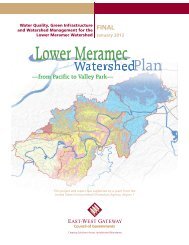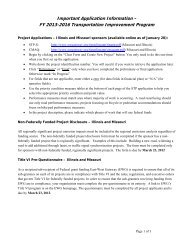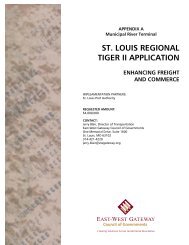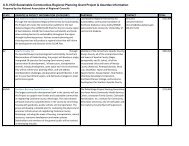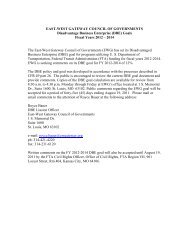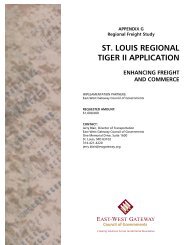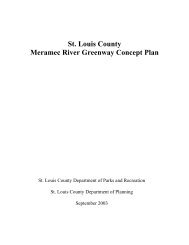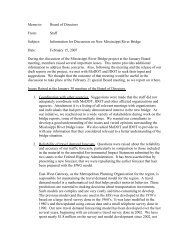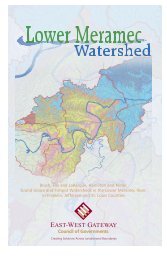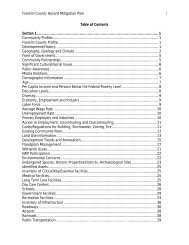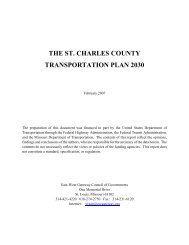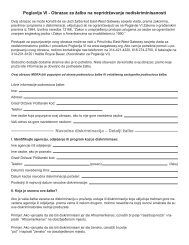Jefferson County - East-West Gateway Coordinating Council
Jefferson County - East-West Gateway Coordinating Council
Jefferson County - East-West Gateway Coordinating Council
Create successful ePaper yourself
Turn your PDF publications into a flip-book with our unique Google optimized e-Paper software.
36<br />
<strong>Jefferson</strong> <strong>County</strong> – Section 2<br />
Insurance should be purchased behind levees to protect citizens against future flood<br />
losses.<br />
Need of a state definition of market value due to 1) NFIP rules not providing a<br />
definition and 2). FEMA not abiding by its definition of market value.<br />
Remove substantially and repetitively damaged structures from flood plains.<br />
Acquire easements on lands through Emergency Wetlands Reserve program,<br />
Conservation Reserve program, USFW.<br />
Ensure that placement/security of hazardous materials on floodplains is done.<br />
Earthquake Hazard Profile<br />
Background<br />
The State of Missouri established the Missouri Seismic Safety Commission (MSSC) through<br />
the authority of the Seismic Safety Commission Act also known as (RSMo) Sections 44.225<br />
through 44.237, the main office being within SEMA. The purpose of MSSC is to review<br />
Missouri’s current preparedness for major earthquakes and to make recommendations to<br />
mitigate their impact. MSSC developed a 1997 plan titled A Strategic Plan for Earthquake<br />
Safety that documented successes, opportunities and concerns including<br />
recommendations: 1) that educational efforts continue to be developed and expanded and<br />
that the MSSC take the lead; 2) that continued and increased cooperation of State agencies<br />
with nationally funded programs (National Science Foundation funding the Mid-America<br />
Earthquake Center); 3) that stable State funding be provided for the Missouri earthquake<br />
mitigation and preparedness program; 4) that SEMA review and recommend hiring a<br />
person to train and tract the Community Emergency Response Teams [CERT]; and 5) to<br />
assess the impact of National Hazard Earthquake Reduction Program maps on the state<br />
and that scientific investigations be conducted to evaluate assumptions upon which maps<br />
are based.<br />
The MSSC prepared the A Strategic Plan for Earthquake Safety as the result of a legislative<br />
mandate, Senate Bill No. 142 in 1993. The MSCC is similar to Utah’s Seismic Safety<br />
Commission. This plan will aid in projecting goals, initiatives and priorities. The MSCC<br />
notes that preparation following the Strategic Plan will yield significant reduction in<br />
fatalities, casualties, damaged structures, business failures and state infrastructure losses<br />
from earthquakes and will reduce the impact from other hazards. Key issues identified by<br />
MSSC are: 1) Earthquake threat is real. Addressing the problem now will yield significant<br />
long-term benefits; 2) Reduction of earthquake risk required combined efforts of<br />
individuals, businesses, industry, professional and volunteer organizations and all levels of<br />
government [promote adoption and enforcement of appropriate building codes]; 3)<br />
Strategies identified in the report for reducing earthquake risk can be implemented<br />
through proactive, voluntary community participation; others will require legislation or<br />
funding, [promote community emergency response teams-CERTs, 4) MSSC accepts<br />
responsibilities to advance earthquake planning and mitigation in state at outlined in plan.



